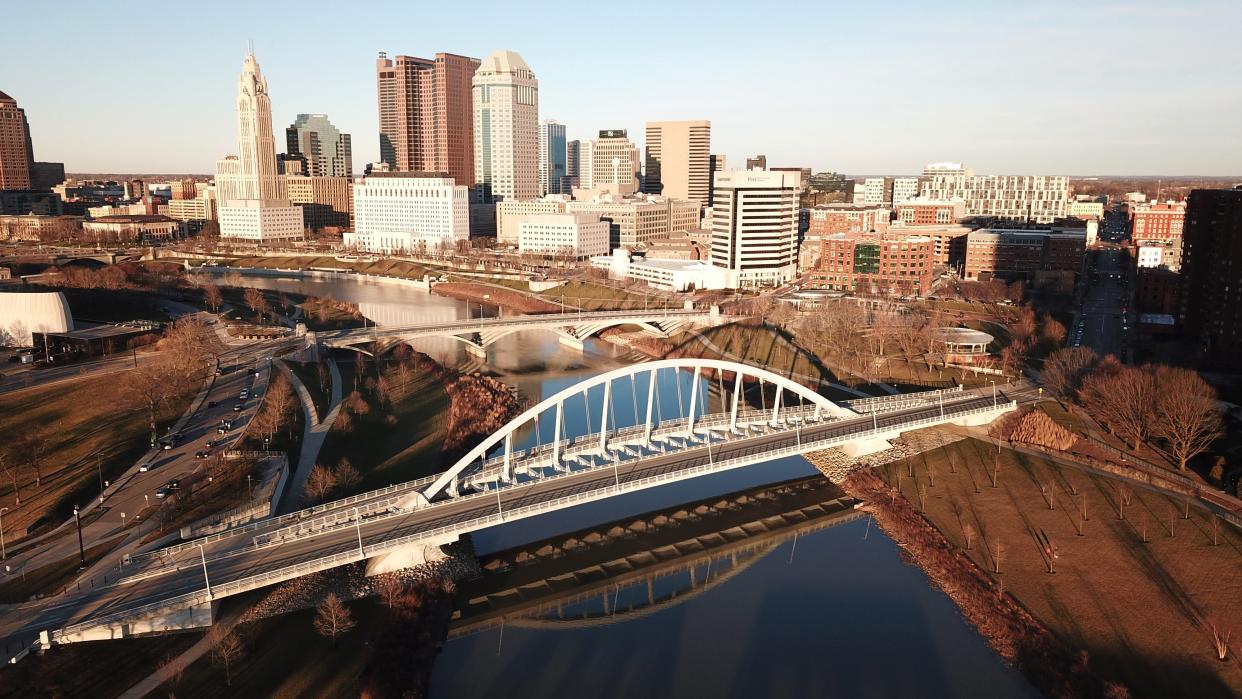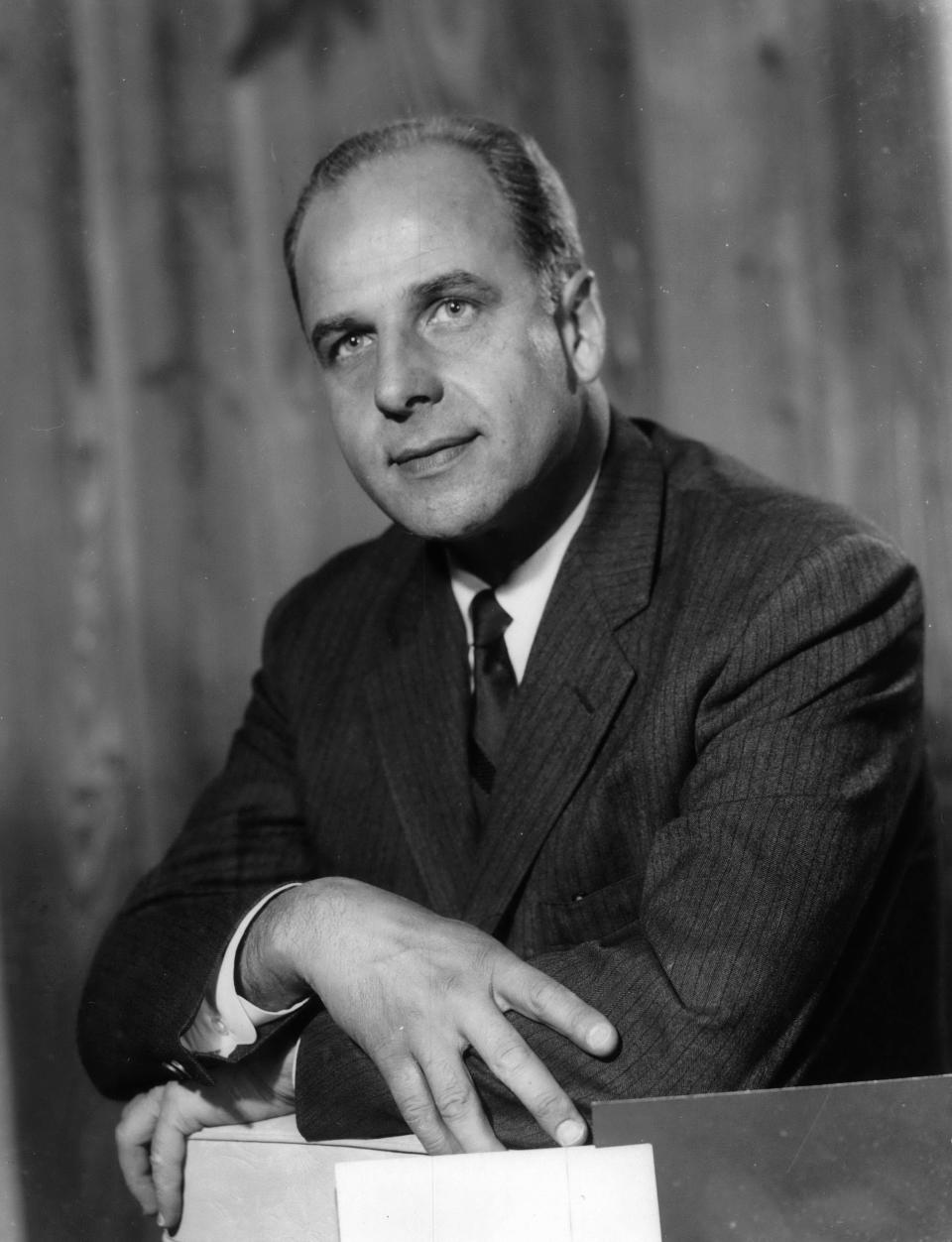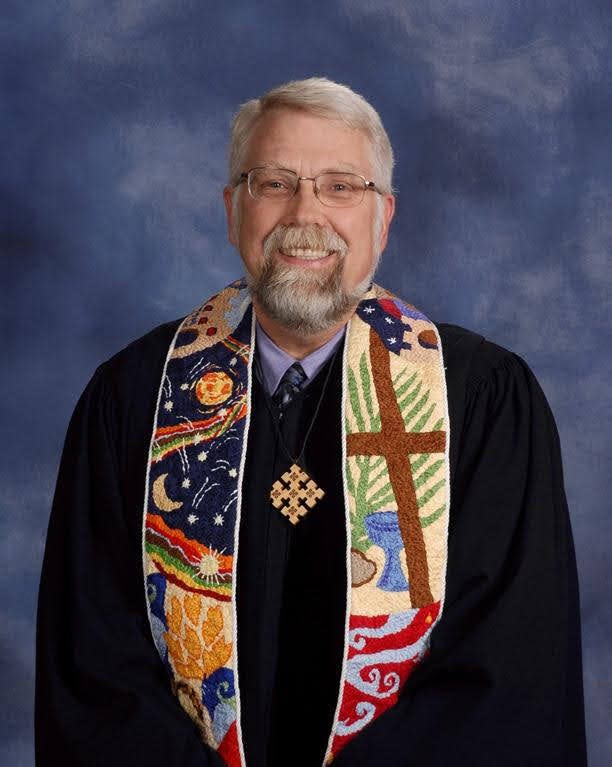Columbus doesn't have to be the fastest growing urban heat island. | Tim Ahrens

Rev. Tim Ahrens is senior minister at First Congregational Church, United Church of Christ in downtown Columbus. He is the author of “The Genius of Justice.”
The first Earth Day was created by God, not by Sen. Gaylord Nelson on April 22, 1970.
Genesis is clear: “In the beginning, God created the heavens and the earth” (Genesis 1:1).
It reveals a creation story in which God, out of the void, creates light and darkness, land and water, planet life, animal life and human life and declares it all “good.”
More: 'Forever chemicals': Eating the fish you catch can be harmful to your health
But God had a friend in Nelson of Wisconsin, who was passionate in declaring that we needed to care for the Earth better than we had been doing.
So, 53 years later, how are we doing?

As human beings who share this planet with all living creatures and nonliving things, we are not alive if we cannot see and say that our Earth’s environment is fragile, and its fragility is threatened mightily each day. We are stewards of the Earth. As stewards, each one of us must think globally and act locally to care for our beloved planet.
Our view: Columbus' housing market not cutting it. We must all open our eyes to crisis
There is a lot we know in central Ohio about environmental fragility. We know the most severe impacts of climate change are hitting our most vulnerable neighbors the hardest. Certain ZIP codes are more likely to suffer from the effects of flooding, poor air quality and increased heat.
Through research, the BREAD Organization – which stands for Building Responsibility Equality And Dignity – has unearthed some stunning discoveries about where we live and how things are going. Here are some of the discoveries:
Of 60 major U.S. cities, Columbus is the fastest growing and eighth largest urban heat island. Columbus can expect an additional three to seven weeks of 90-plus degree days by 2050.
Columbus is getting more and heavier rain, which increases the likelihood of flooding and poses significant risks to infrastructure and public health. The number of days per year that had more than 1.25 inches of rainfall increased by 75% from 1951 to 2012.
Columbus is currently ranked as the 13th worst place in the country to live with asthma, and days over 90 degrees are associated with dangerous ozone pollution levels that can trigger asthma attacks, heart attacks and other serious health issues.
Columbus has less tree coverage than cities of comparable size and development, and 70% of our existing tree canopy is on privately owned land. Communities like Franklinton, Milo-Grogan and the South Side are well below the city average.
Columbus currently lacks any protections for trees on private property, which means developers can cut down any tree without needing approval and without needing to replant elsewhere.

Beyond the obvious dangers posed by flooding, health experts have told us that flooding can be a major contributor to respiratory issues since mold and dust mites thrive in moist environments. These dangers are compounded by a lack of regulation on mold in homes as well as the high cost of remediation. If you are lower income, you are more likely to live close to highways, industry and other areas with higher pollution, more pavement, and less tree coverage because they are the most affordable, all of which can trigger respiratory problems.
BREAD has solutions.
The key solution is to protect our large, mature trees. Trees make a world of a difference in our efforts to save the planet and save lives. We know that urban forests are one of the most valuable forms of infrastructure a city can have. That is because trees absorb stormwater, filter pollutants from industries and highways, and reduce heat through shade and evaporation.
Protecting our large, mature trees is critical because they can reduce summertime ambient air temperature by 20 degrees, reduce street level air pollution by 60%, and absorb hundreds of millions of gallons of stormwater, according to the Columbus Urban Forestry Master Plan.
Research has shown that the cooling effect of one healthy tree is equivalent to 10 room-sized air conditioners operating 20 hours a day. The shade of properly placed trees can save homeowners up to 58% on daytime air conditioning costs.
We know that New York City saw a significant decrease of asthma in young children (29%) after increasing its tree canopy through the installation of over 300 trees for each square kilometer.
In May 2022, BREAD asked city officials the following key questions:
Will you commit to ensuring that the Urban Forestry Master Plan is implemented with fidelity?
Will you commit to ensuring that the public tree ordinance is introduced to City Council no later than Feb. 1, 2023?
Will you commit to having a consultant under contract to develop a private tree protection ordinance no later than June 1, 2023?
Will you commit to convening quarterly meetings between BREAD, yourself and appropriate staff so that we can discuss details of the ordinance and share our input?
Their responses were all “yes.” Although the two ordinances have yet to be implemented, BREAD continues to work to guarantee the implementation of the public tree ordinance and the private tree protection ordinance.
The evidence is clear: We need to protect the trees we have. We need to plant more trees in Columbus. We need to act locally.
![Evelyn Chamberlain, 13, and Sweta Jha, 12, volunteer during a clean-up effort at a site near Eakin Road in Columbus, Ohio on April 20, 2019. The site was cleared of over 1.5 tons of trash last year but the trees that were planted were destroyed by ATV traffic. Volunteers from The Sierra Club came to clean up what trash has returned since their last visit and plant an additional 200 trees on the lot. [Brooke LaValley/Dispatch]](https://s.yimg.com/ny/api/res/1.2/DEl_TYaRRE3JWaIdoLKhEw--/YXBwaWQ9aGlnaGxhbmRlcjt3PTk2MDtoPTYyNg--/https://media.zenfs.com/en/the-columbus-dispatch/0935c8a4d5dbfbbc3581fd587250e180)
To help, come join BREAD on Tuesday night at the Celeste Center at the Ohio State Fairgrounds at 6:45 p.m. Join with thousands of other people to continue our environmental justice action for Columbus and Franklin County.
We need to breathe and care for the Earth and all who exist here. Our care for our global home begins in Columbus. This Earth Day, make a difference. Prayer and action together will bring real change. God has given us care for the Earth, so let us do it now.
Rev. Tim Ahrens is senior minister at First Congregational Church, United Church of Christ in downtown Columbus. He is the author of “The Genius of Justice.”
This article originally appeared on The Columbus Dispatch: Columbus is the fastest growing urban heat island| Tim Ahrens

